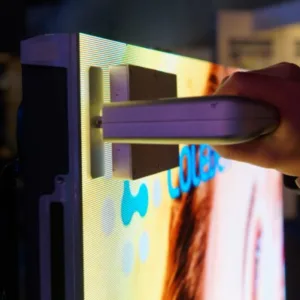IBC is an important event for companies that are in the LED market and that want to supply the fine-pitch LEDs that many broadcasters like to have as video walls in their studios. Most of them were in a small area. It’s always interesting to note who is not at the show and I thought that Silicon Core, which has done well in this market was a significant omission. Of course, we’re expecting to see CoB LED technology from the firm, but the rumour at the show was that the development is going a bit more slowly than hoped, so perhaps that’s why the firm wasn’t present. Anyway, we saw plenty!
Aoto was highlighting its 108″ monolithic 1.2mm display which can produce 800 cd/m² of output at 1920 x 1080 resolution. There are no cables apart from power and HDMI and the system is intended to be plug & play. It is priced at around $120,000 and is just 6cm thick.
There was also a display fitted with a 10 point infrared touch sensor, although the front surface of the LED was not flat, so we’re not sure that we would want to use it for long.
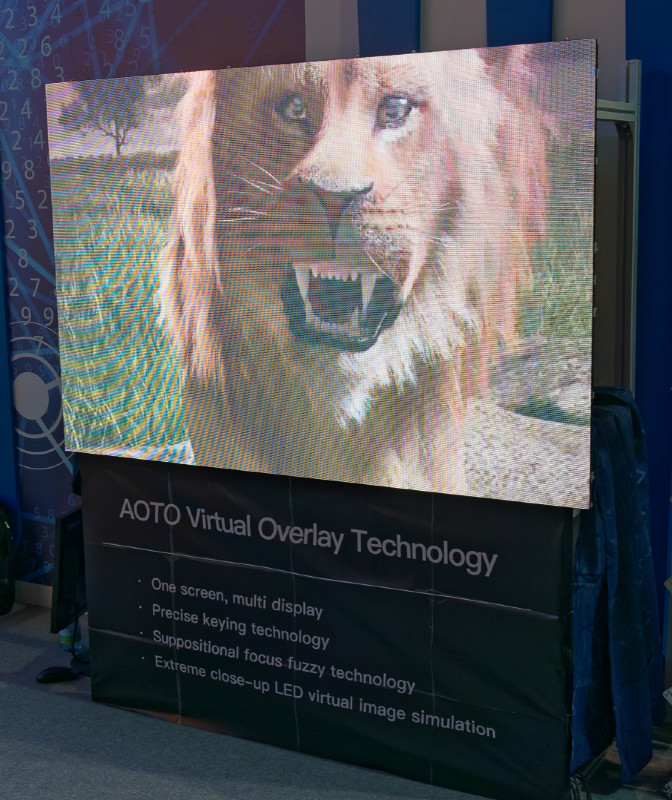 Aoto is looking at touch but did not have a flat surface. Image:Meko
Aoto is looking at touch but did not have a flat surface. Image:Meko
The company was showing its ‘virtual overlay’ technology which can be used in perimeter displays to provide different advertising depending on the region of broadcast.
The company had the CLD range that was promoted at ISE. It has been having success with the range and told us that it has sold a 100m² installation for Sky Deutschland for use in studios and also has a 22m² installation for a finance group in Germany.
 Aoto’s CLD Range was shown at ISE and looks good. Image:Meko
Aoto’s CLD Range was shown at ISE and looks good. Image:Meko
Coleder Going Local in Netherlands
We first reported on Coleder from ISE in Feb 2016 and that was part of a move into international markets. At IBC, we caught up with the company which has now set up an operation near Utrecht in the Netherlands to add to its US operation. As well as European Sales and Marketing, the office is contributing to developing products that are better suited to the market. It is selling directly to users and via integrators and is not looking for general distribution.
The company is focusing in Europe on fine pitch and meeting rooms and broadcaster are two of the main target markets. The concentration is on LEDs for indoor use and the company also supports products for rental. Features include front access for service as standard and cabinets that are entirely cable-free, making for very neat installations. The company has pitches from 1.2mm to 4.9mm available and the cabinets are in 16:9 aspect ratio.
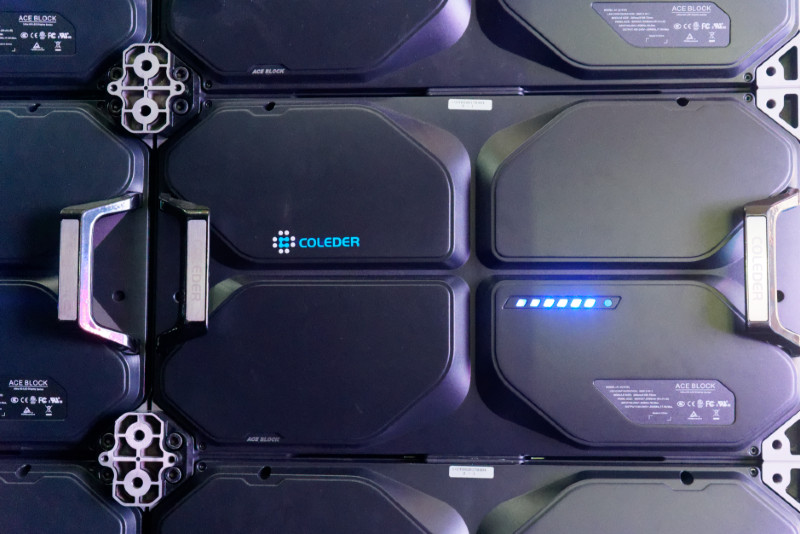 Coledor’s cabinet is cable free. Image:Meko
Coledor’s cabinet is cable free. Image:Meko
The company prides itself on very accurate alignment, with tolerances down to 0.02 mm to make a very high image quality. European influence has also meant a change to eliminate the plastic in the front of the module, which helps in securing CE marking for RFI. Coleder believes that this will become a more important factor in the future, although the concern of users is very uneven on this topic at the moment.
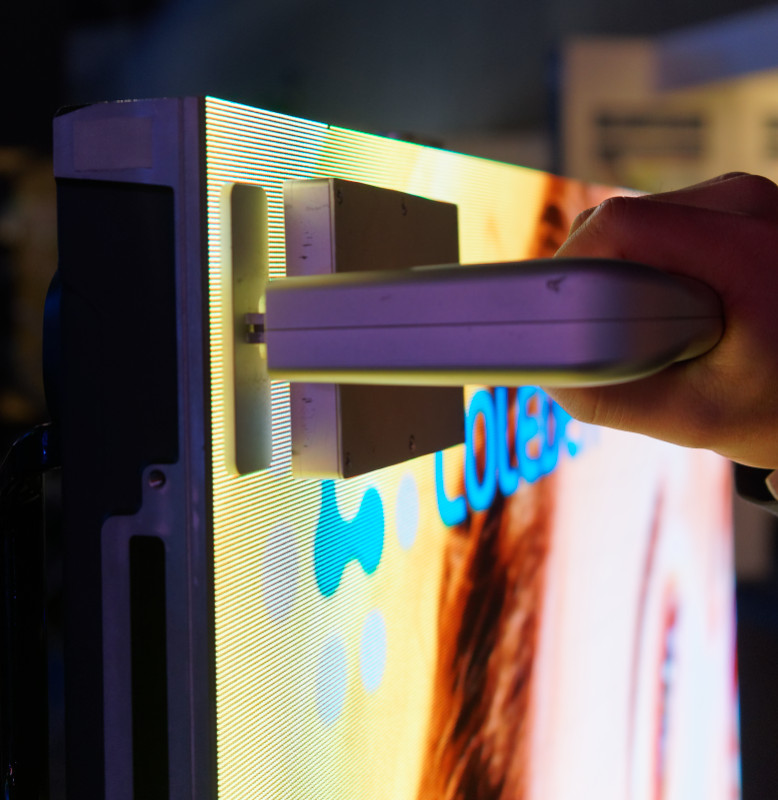 We were impressed with Coledor’s accuracy when a module was removed and replaced. Image:Meko
We were impressed with Coledor’s accuracy when a module was removed and replaced. Image:Meko
Leyard had a good presence at the show and was highlighting the touch film that we reported on from Infocomm as it was the first time that it had been shown in Europe. Otherwise, there were no new developments.
Liantronics was showing its 1.4mm pitch LEDs for the first time and the company told us that output can be up to 1,000 cd/m² although it is often less in studio installations. There was also a new 1.9mm rental cabinet being shown for the first time. The company told us that its LEDs are in around 1,000 studios around the world.
Unilumin has a strong position in broadcast that is helped by its relationship with local specialists such as Eyevis which covers control rooms and broadcast. The first surprise for us at the show was to meet Steve Scorse (until recently at Silicon Core) who is now VP of EMEA at Unilumin and is in the process of setting up a European HQ operation at Brentford, to the West of London. He is optimistic that it will be operational by the end of 2017. London is an important market for narrow pixel pitch LEDs and Scorse estimates that there are already 40 or so installations and there continues to be a lot of interest and demand. Even pitches down to 1.2mm or 0.9mm are proving interesting.
The current Amsterdam office will remain as a service centre and the company is setting up an office in Dubai.
Of course, pricing is coming down and sizes such as 1.9mm have declined to a third of the price in just four years and 1.2mm is now cheaper than 1.9mm technology was not that long ago.
The organisation will reflect the global structure which is based on four sections – fine pixel pitch (<2.5mm) , fixed installation (2.5mm – 20mm), rental and broadcast (although there is overlap between the last two). One reason that Unilumin can focus is that it owns 60% of ROE which is looking at creative shapes and other areas in the market. The company also has Shenzen Lamp Technology which focuses on outdoor applications. http://szlamp.net The company believes that this combination makes the group the biggest provider in China.
In the narrow pitch area, the main applications are expected to be meeting rooms, lobbies, visualisation, museums and Scorse expects some demand in command and control, although this application is more important for LED in Asia and the US.
The company will have a mixed distribution strategy with some stockholding distributors as well as direct relationships with integrators and direct user contacts.
On the product side, there was nothing that we have not already reported, but there is an increasing interest in ‘off the shelf’ displays including both monolithic displays and also totems. Staff highlighted the cablefree designs and auto configuration system. Watch out for some interesting product news at ISE.
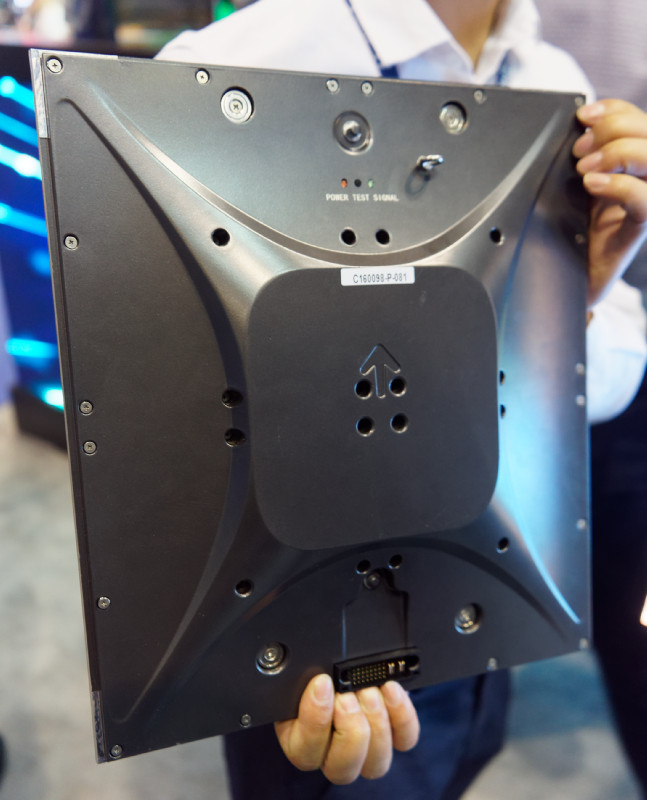
2017 was the first time that Yestech had exhibited at IBC although we reported on the company at ProLight & Sound in 2016 and 2017. At IBC, the company was highlighting interactive floor displays. The first installation that we looked at had a lidar sensor on the corner of the LED display that can track the users and drive the display. There was also an alternative version that uses a sensor in a mesh on the tiles.
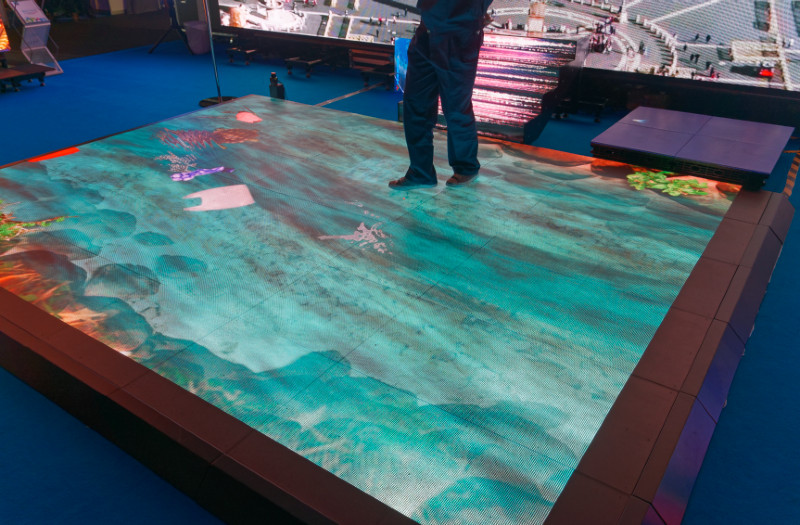 Yestech showed this LED floor that uses a lidar sensor, visible at the far corner. Image:Meko
Yestech showed this LED floor that uses a lidar sensor, visible at the far corner. Image:Meko

